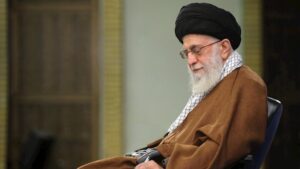Hassan Salarieh, speaking at the opening ceremony of World Space Week held at Iran’s Ministry of Communications in Tehran, highlighted Iran’s strategic plans in the space sector and announced significant progress in indigenous technologies, international cooperation, and the active involvement of the private sector in space projects.
He emphasized the implementation of Iran’s 10-year space program and the Seventh Development Plan, saying that numerous academic-based proposals in the fields of space science and exploration will be carried out.
Salarieh added that one of the key programs is the development of bio-capsules and returnable research platforms with precise control and navigation capabilities, which will serve as space laboratories to conduct experiments on the biological effects of orbital and suborbital missions — including the impacts of radiation, temperature, and pressure.
Iran to cooperate with China on Chang’e 8 lunar mission
Salarieh also announced Iran’s cooperation with China on the Chang’e-8 lunar mission, adding that the partnership began last year and has now reached its final stages. He noted that construction of the mission’s engineering model will soon begin.
Pointing to the successful launches of the Pars-1 and Nahid-2 satellites into orbit, Salarieh said that the next generation of these satellites is ready for launch following technical upgrades.
Second version of Kosar satellite with 4-meter imaging resolution
Referring to the administration’s emphasis on private-sector participation, Salarieh said that the second version of the Kosar satellite — with an imaging resolution of 4 meters — has been completed.
He explained that the satellite was designed by an Iranian knowledge-based company. He also stated that several satellites, including the Zafar-2 and Paya remote-sensing satellites, will be launched into orbit using a foreign launcher, while another test version of the Nahid-2 satellite will be launched with the domestic Simorgh launcher.







